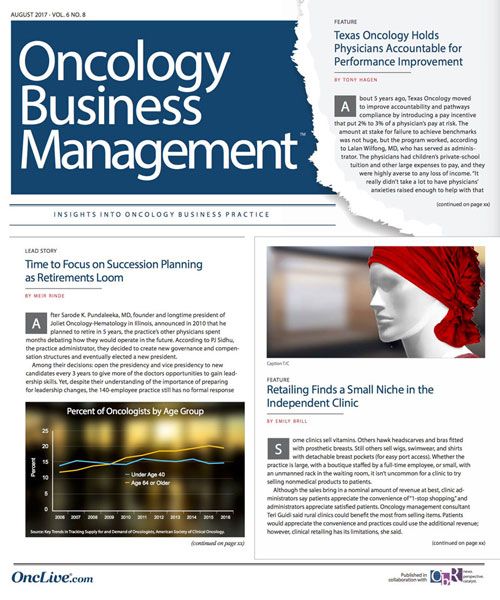Not All Care Pathways Lead to Optimal Outcomes and Cost
To optimize clinical outcomes and reduce the total cost of care, it is important to limit physicians’ choices of care.
Andrew L. Pecora, MD
To optimize clinical outcomes and reduce the total cost of care, it is important to limit physicians’ choices of care. The current belief is that, in the fee-for-service world, physicians have a perverse incentive to overtreat patients: the more they do, the more money they will make; and because they are paid based on the amount of care rather than the value of care, they will do more than is necessary to achieve the ideal outcome. This is probably happening in some—but not all—circumstances. Conversely, undertreatment can lead to less-than-optimal clinical outcomes and a greater total cost of care. Over- and underutilization of care are each considered a form of adverse variance. The question is how best to prevent this.
One well-known success was the approach Texas Oncology took to hold physicians accountable for performance improvement. The group put 2% to 3% of physician pay “at risk” for failure to comply with prespecified pathways. The surprising finding was that the threat of such a small reduction in pay could significantly alter physician care choices. Obviously and foremost, the pathways were evidence based and externally verified (peer-reviewed publications, National Comprehensive Cancer Network, etc). In general, the physicians had to treat as indicated by pathways or forfeit a portion of their income.
However, Texas Oncology did recognize that subtle patient differences require occasional deviation from pathways, so they chose to fully pay physicians who achieved 75% compliance with pathways. Whenever a physician wanted to deviate from a pathway, they had an opportunity to explain why and were credited as being compliant if 50% of the reviewers agreed with the care choice made. Another interesting facet is that Texas Oncology implicitly understood that 100% compliance with pathways may not be ideal. They reviewed the patient cases of doctors who did not deviate from pathways, out of concern that the doctors were not accommodating individual patient variables that would make established pathways inappropriate.
Whereas some pathways variance is undesirable, 3 new forms of adverse variance have been highlighted by the CMS Oncology Care Model: emergency department (ED) visits, hospitalizations, and late introduction to hospice. Limiting these cost drivers is now central to the reduction of adverse variance.
If we get just the right amount of compliance to pathways and fine-tune ED use, hospitalization, and use of hospice, will all be fine? I am not so sure. We have entered the era of precision medicine, where we can tailor therapies for individual patients based on their unique attributes. How can we expect pathways to keep up-to-date with these advances? Although it is sometimes allowable to deviate from pathways, there may not be any assessment that the deviation was truly justified for the individual patient. Worse still, for physicians who remain compliant with pathways, their care choices may not be optimal. The first step to selecting appropriate care is weighing all relevant personal and disease-specific attributes of the patient. The second step is ensuring that when 2 or more equal treatment options exist, the lowest-cost option is selected. This approach allows individual patients to receive optimal care regardless of cost but also enables reduction of total cost of care for populations of patients with similar health problems. As we leave the era of fee-for-service, we must ensure that the care pathways we follow are best for each individual patient.




